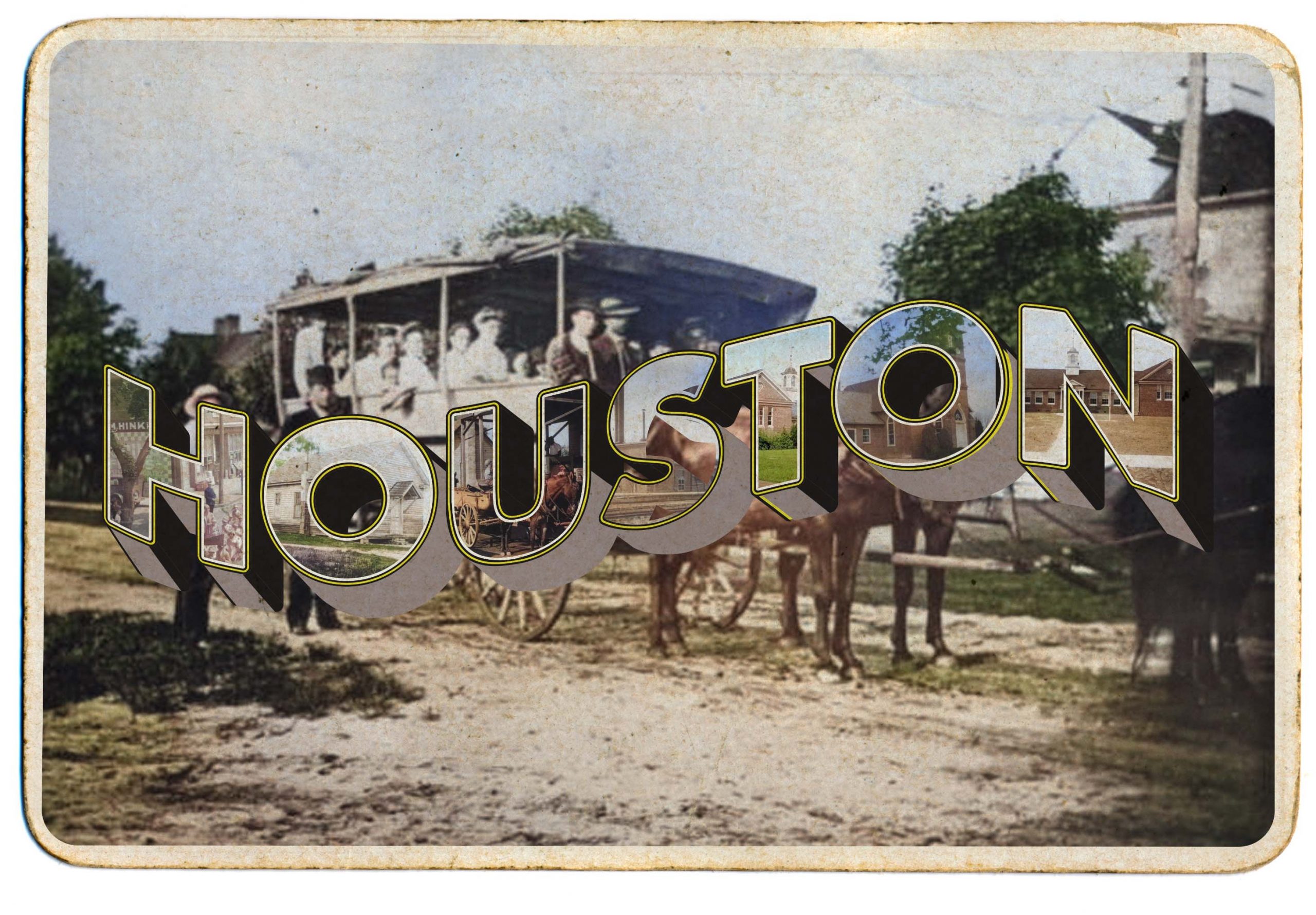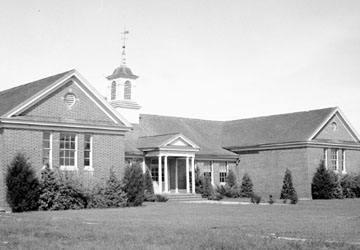Join us for December's First Saturday Program: A County Divided – Loyalists, Patriots, and the Revolutionary Experience in Sussex County.
More Info



Houston, a town of less than a half square mile, was named for John W. Houston, a lawyer and politician from Georgetown who was Delaware’s Secretary of State from 1841-1844.
The Town was first incorporated in 1913 as “The Commissioners of Houston.” Its corporate boundary was originally a rectangle of 160’ x 247’ located mid-way between Harrington and Milford. Elections were to be held in March and males over the age of 21 who had paid their taxes could vote. The five Commissioners elected served staggered two-year terms and chose one of their members as President. The other Town officials appointed were a Clerk, Treasurer, Tax Collector, Alderman, and Town Constable. The Commissioners met four times annually, in March, June, September, and December to pass ordinances and rules to govern the Town. The Commissioners could prohibit nuisances, practices, and performances which were considered obnoxious, unhealthy, or unsafe. The Commissioners were given oversight over all of the Town’s streets and the authority to lay out new streets. They were to receive $200 from Kent County towards street maintenance. Commissioners were also able to require residents whose lot bordered a street to lay a sidewalk bordering it. In addition to assessing real estate, all male residents of the Town were to be assessed a per capita tax. Vacant land of over five acres on a single lot was exempt from taxes. The maximum amount of Town taxes levied annually was not to exceed $300.1 The first three times that the 1913 Incorporating Act was amended increased the maximum amount of taxes that could be levied on the Town: in 1929, it was increased from $300 to $6002; in 1931, it was increased to $8003 and in 1949, to $2,000.4
The next time the Incorporating Act was amended was in 1955. Some changes were made to the elections process including affording all residents of the Town the ability to vote and increasing the number of meetings to be held by the Commissioners annually from four to twelve. In another law that year, some changes were made to the duties of the Police Force.5 In 1963, the Town of Houston was re-incorporated as “The Town of Houston,” and a Charter was established. The Town’s corporate boundary did not change. The government of the Town and the exercise of power were conferred by the Charter and vested in a five-member Town Council who were elected to two-year, staggered terms. The Council elected one of their members as President and appointed other Town officials to include a Secretary, Treasurer, Auditors, Town Solicitor, Board of Assessment, Collector of Taxes, Alderman, and Police Force. Meetings of the Council were to be held monthly. They were given both general powers of government and certain enumerated powers including those which were part of the 1913 Incorporating Act as well as: preventing fire hazards, constructing and maintaining water mains and fire hydrants, providing for pedestrian safety and enforcing parking regulations, registering dogs and keeping them from running at large, regulating all bonfires, firing of firearms and exploding of fireworks and explosives, licensing of businesses, regulating the use of streets by public utilities and preventing electrical interference with radio reception, issuing building permits and enforcing certain building regulations in order to protect from fire and to ensure public safety. The Council was also vested with the authority to construct and maintain a water and sewer system as well as a plant for generating electricity or to contract with companies who would provide these services to the Town’s residents. Every four years the Town’s Board of Assessment was to conduct an assessment of real property. Taxes could also be levied on all residents over the age of 21, and telephone, telegraph, and power poles, but not on farmlands unless they were laid out as building lots. The maximum amount of taxes that could be levied on the Town’s residents was not to exceed $5,000. The Charter allowed for this figure to be increased if approved by referendum. Non-payment of taxes would constitute a lien on real property. The Council was given the power to borrow money and to issue bonds after approval by referendum in an amount not to exceed $40,000. They could also float debt of up to $2,500.6
Fifteen years later in 1978, the Town was re-incorporated again. The territorial limits contained in this Charter was described in metes and bounds and totaled 257 acres. This is a larger area than that described in the 1963 Charter. The Charter also contains a process for annexing additional land after approval of this action by referendum vote. The structure of the government has also changed and is vested in a Mayor (a voting member) and a four-member Town Council, all of whom serve two-year terms. The election process is described and indicates that those residents over 18 who are not delinquent in their Town taxes may vote. At the annual meeting of the Council, they choose a Vice-Mayor who serves a one-year term, a Secretary, and an Assistant Secretary. While the Vice-Mayor must be a Council member, this is not required for the Secretary positions. The Council, and/or the Mayor, must also appoint an Alderman and Assistant Alderman, Treasurer, Collector of Taxes, Auditor of Accounts, Town Solicitor, Board of Assessment, and Board of Health. In addition, the Town Council may make rules and regulations necessary for the organization and control of the Police Force. There are forty-three enumerated powers listed in the Charter. Most of these are the same as in prior Incorporating Acts. The Charter indicates that the assessment process is to take place annually. Taxes for residents over 65 and those paid early are granted an abatement; those paid late, a penalty. Delinquency in paying taxes can result in a lien on the property. The maximum amount of tax for the Town is $500,000 annually. The amount of money which the Town can borrow and issue bonds, in aggregate, is to be no more than 25% of the assessed real estate in the Town, and the floating debt can be $100,000.7
Two laws have amended the 1978 Charter. Both reflected mostly technical corrections. The first in 1980 contained fourteen corrections. The most significant changes allowed for absentee balloting and allowed the Board of Assessment to accept the assessment of Kent County rather than conducting an annual assessment.8 A 1983 law contained four additional technical corrections to the 1978 Charter.9
For the fully amended text of the current Charter, see http://www.charters.delaware.gov/houston.shtml
CITATIONS in Del. Laws
1 27 Del. Laws, c. 240 (1913) [pp. 685-96]
2 36 Del. Laws, c. 163 (1929) [p. 508]
3 37 Del. Laws, c. 160 (1931) [p. 557]
4 47 Del. Laws, c. 86 (1949) [p. 137]
5 50 Del. Laws, c. 110 and c. 111 (1955) [p. 182 and p. 183]
6 54 Del. Laws, c. 82 (1963) [pp. 218-66]
7 61 Del. Laws, c. 517 (1978) [pp. 1486-1530]
8 62 Del. Laws, c. 366 (1980) [pp. 854-55]
9 64 Del. Laws, c. 211 (1983) [p. 523]
Delaware Laws from 1935 to present can be found online at http://delcode.delaware.gov/sessionlaws/
Town of Houston records at the Delaware Public Archives include:
jnl / August 1, 2018 | April 23, 2019